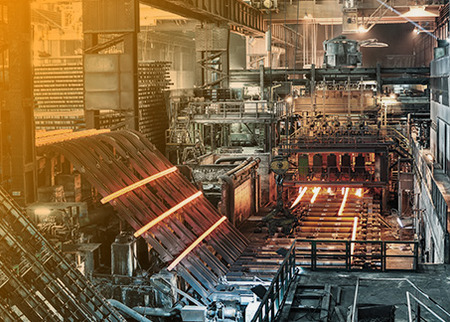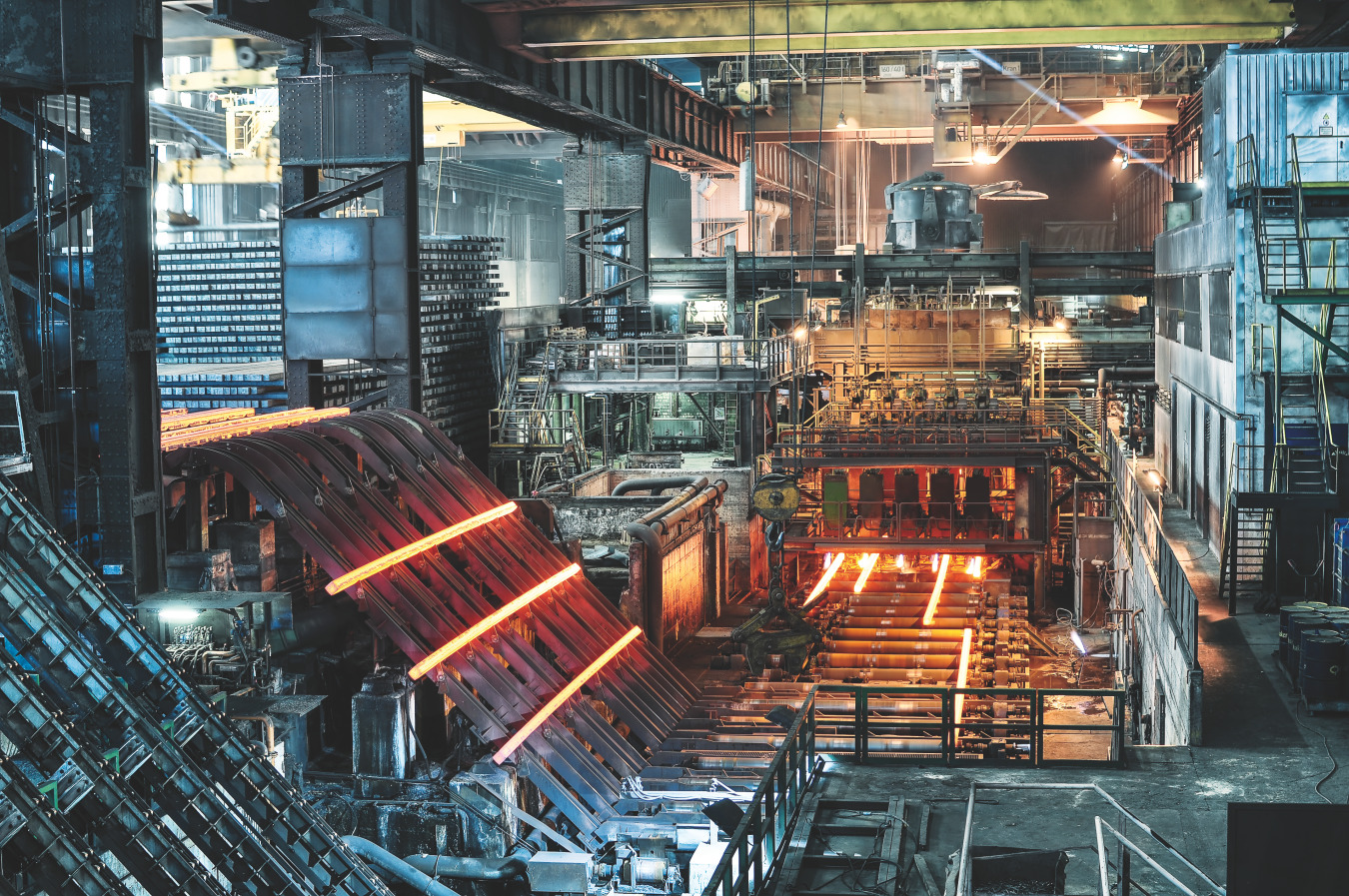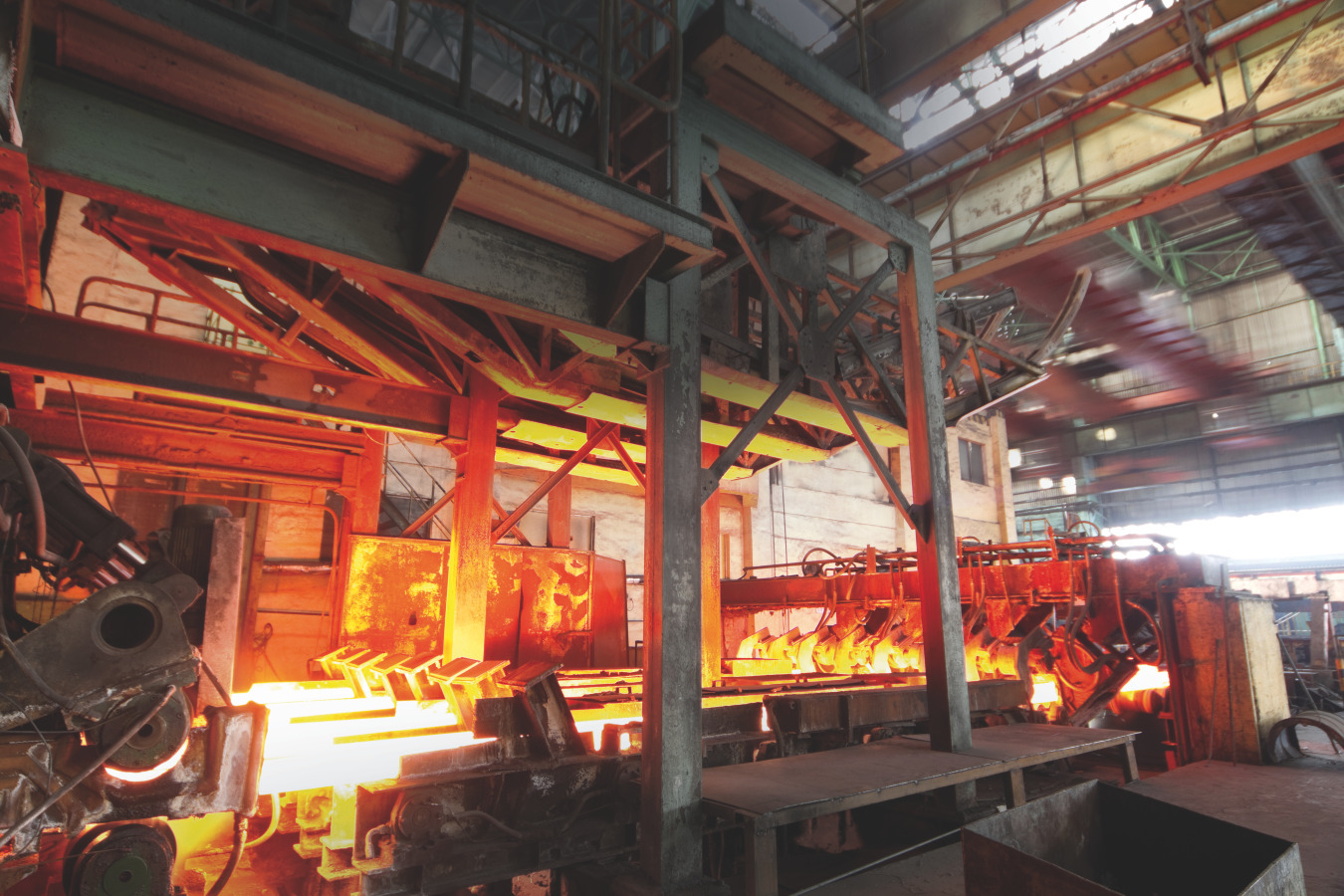Let's start with the basics:
Challenges and solutions in repairing components with weld overlays for the steel industry

We sat down with Tim Suys, who has been active in the hardfacing business for more than 25 years and is responsible for Global Business Development of Steel Mills, to ask him about the current challenges in the repair of components in the applications of continuous casting rollers. Read the expert interview now!
The steel mills are producing more and more special steels, such as high strength steels. These steels cause more wear on caster rollers. Providing the right welding consumables to further improve the service life of caster rollers is a major challenge.
How does UTP answer the challenges of increased wear exposure?
Repairing parts is always more sustainable than replacing them with new parts. Therefore, we will continuously try to improve our products and services to offer the best solutions for steel manufacturers.
With the special welding products that we developed over the years, we can give the rollers a much better service life, which is up to 50% better than the old solutions. We will, of course, continue to work on new alloying concepts to meet the challenges ahead.
One outstanding project was with ArcelorMittal in Gent, Belgium. Their continuous casting line was experiencing driving roll issues. We introduced a 15% cobalt alloy filler metal that doubled the service life of the rolls — a real success story in the steel segment of the welding industry.
Could you give us some tips how to increase productivity by reducing wear on caster rollers?
Correct selection of overlay materials, taking into account the chemistry, temperature conditions, geometry and roughness, designed for the specific steel grades to be cast and the environment including temperature, humidity and corrosive media.
- Correct alignment of casting rolls & load distribution - Misalignment can lead to uneven wear and premature failure of the rolls. It is also important to regularly check the alignment of the rollers during their service life and adjust them as needed. Furthermore, misalignment contributes to uneven load distribution that in turn also can lead to excessive wear on certain rolls or even to premature failure. Therefore, the load should be distributed evenly.
- Stick to a maintenance schedule - Simple steps such as regular cleaning and maintenance, proper lubrication, proper handling, trained personnel operating the equipment, and regular inspections can significantly reduce wear and tear on caster rolls.
- Surface protection - The application of hardfacing deposition makes it possible to effectively combat the wear of caster rolls. The application of cladding layers is one of the most effective methods of withstanding these severe conditions and thereby extending the service life of caster rolls.
For example, the most commonly used material for cladding continuous casting rolls is a modified martensitic stainless steel of the AISI 400 series with 12% chromium. The introduction of weld claddings with these materials in the mid-to-late 1980s significantly improved product quality and the service life of continuous casting rolls.

How do rollers wear and what causes this wear?
Caster rollers are subject to extremely demanding working conditions. These rollers have to withstand high contact pressures, high temperatures, abrasive oxides and slag, as well as cyclic stresses —both thermal and mechanical. Over time, these conditions contribute to several types of wear mechanisms, including abrasive wear, adhesive wear, oxidation, plastic deformation, fatigue, corrosion, and, in some cases, even catastrophic failure.
That's quite a list of challenges! Can you break down some of these wear mechanisms for us, starting with abrasive and adhesive wear?
Abrasive and adhesive wear are primarily caused by contact with oxides, slag, and the slab itself. As the molten material solidifies and is extracted, the roller’s surface suffers from abrasive forces of the hardened oxides and slag that build up on the cast slab. These forces act to wear down the surface of the rollers over time.
How does oxidation contribute to wear on caster rollers?
Oxidation is especially important at high temperatures and in the presence of steam. This process results in the formation of surface oxides, that worsen abrasive wear. This oxidation process results in an “elephant skin” pattern on the roller surface — a result of oxidation along grain boundaries. This pattern weakens the surface, often leading to cracking and spalling of the material.
That sounds like a serious issue. And what about plastic deformation and fatigue - how do they affect the rollers?
Plastic deformation occurs when the roll surface deforms due to high contact pressure with the hot slab, especially when the rollers repeatedly encounter these forces.
Thermal and mechanical fatigue are also critical wear mechanisms. As the roller rotates, it experiences cyclic stresses from the slab’s passage and bending forces, as well as extreme temperature changes as the surface contacts the hot slab, which is up to about 600°C, and then is cooled by water spray. These repeated temperature changes cause a fine network of cracks known as “fire-cracking,” which is one of the leading causes of material loss in roughing stands.
How do corrosion mechanisms play a role in the deterioration of caster rollers?
Corrosion mechanisms such as pitting and crevice corrosion originate in aggressive acidic environments within the caster, often due to localized conditions favoring anodic dissolution of the steel. Mold-flux-induced corrosion is another issue, where water spray - often containing hydrofluoric acid from reactions with mold flux powder - creates a low pH environment. This environment accelerates pitting, crevice corrosion, and can lead to stress corrosion cracking, particularly at areas of surface discontinuities.

You mentioned catastrophic failures earlier. Can you explain how these occur?
Catastrophic failure can be either caused by improper material selection or the progressive wear mechanisms already mentioned. For instance, excessive spalling, surface degradation, or roll breakage can be traced back to wear mechanisms such as thermal fatigue, oxidation or corrosion. If left unchecked, they eventually lead to sudden, complete failure.
With so many wear mechanisms at play, how can operators prevent these issues? Are there any specific strategies or treatments that help?
Yes, there are several key strategies for mitigating these issues.
One of the most effective preventive measures is cladding layers. These layers should be designed to withstand the harsh conditions of continuous casting. Specifically, protective layers should meet the following requirements:
- For abrasive and adhesive wear, we need a high combination of hardness and strength with adequate toughness. Limiting the δ-ferrite content in the weld metal to around 9% is essential, as excess ferrite can reduce the hardness and strength of the cladding.
- To combat oxidation at elevated temperatures, a high chromium content (over 12%) in the cladding helps form a stable, regenerative oxide layer. In addition, alloying with nitrogen can further stabilize the oxide layer. The formation of a stable nitrogen modified FeO.Cr2O3 spinel phase on the roll surface provides a lower coefficient of friction and superior resistance to cracking and adhesive wear. Nitrogen also forms nitride precipitates that inhibit grain growth, improving the stability of the oxide film and resistance to adhesive wear.
- During plastic deformation, the strength and ductility of the cladding layer must withstand repeated, strong contact with the hot slab.
You've mentioned the importance of material composition in the protective layers. Could you elaborate on specific design properties or materials that help protect caster rolls from these various forms of wear?
Material selection is key to ensuring caster roll longevity. Here are some critical requirements:
- Tempering Resistance: High tempering resistance is essential to prevent softening of the protective layer at high-temperature service.
- Thermal and Mechanical Fatigue: For high fatigue resistance, the protective layer should have low thermal expansion and high thermal conductivity to reduce stress from heating and cooling. Controlling weld metal composition, especially limiting retained austenite, minimizes differences in expansion that can weaken the layer.
- Localized Corrosion: To resist pitting and crevice corrosion, the protective layer should contain high levels of chromium, molybdenum, and nitrogen, which increase passivity and resistance to aggressive environments.
- Premature Interbead Corrosion: This type of corrosion can occur when hardfacing in multiple layers, a process known as multi-pass welding. In this case, slow cooling can promote the formation of chromium-rich M23C6 carbides at austenite grain and martensite lath boundaries. These carbides deplete chromium from the surrounding matrix, causing it to become susceptible to corrosion in the chromium-depleted areas, especially in reheated or inter-bead zones. To mitigate this, a reduction in carbon content and an increase in chromium and nitrogen levels can help reduce sensitization and corrosion in these areas.
- Stress Corrosion Cracking (SCC): SCC is often triggered by the formation of corrosion pits or crevices in reheated or overlap zones where the weld thermal cycle can lead to chromium depletion. This depletion makes the areas more susceptible to intergranular attack, especially under tensile stress. These cracks can propagate further and weakening the protective layer.
To reduce both premature interbead corrosion and SCC, protective layers with high thermal conductivity, good weldability and reasonable costs should be developed. In addition, careful control of alloy composition, cooling rates, and thermal cycles during welding is essential to prevent sensitization and extend caster roll life.
So it seems like a lot of attention goes into selecting materials that not only provide immediate hardness but also long-term resilience in extreme conditions.
Are there any additional steps that operators can take during maintenance to ensure these layers functioning optimally?
Yes, maintenance just as important as the initial material selection. During routine inspections, signs of premature wear such as pitting, cracking or corrosion between the beads can be detected. Any visible deterioration should be addressed immediately to prevent it from progressing. Adopting these strategies - both in terms of material choice and maintenance - helps operators maximize the lifespan of caster rolls while maintaining production efficiency.
Do you still have questions? We will be happy to help you. Contact us now!